#Replacement Mazda 6 engine
Text
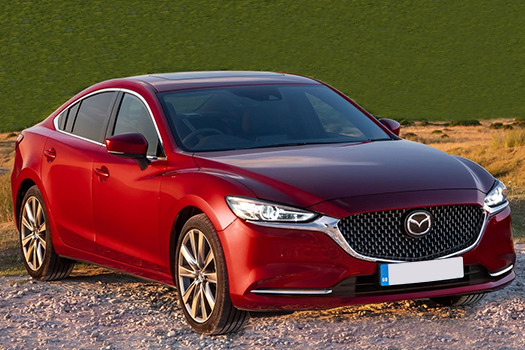
How to Choose the Best Mazda 6 Replacement Engine for Your Vehicle
#Mazda 6 Replacement Engine#Rebuilt Mazda 6 Engines#Reconditioned Mazda 6 engines#Remanufactured Mazda 6 engines#Replacement Mazda 6 engine
0 notes
Photo
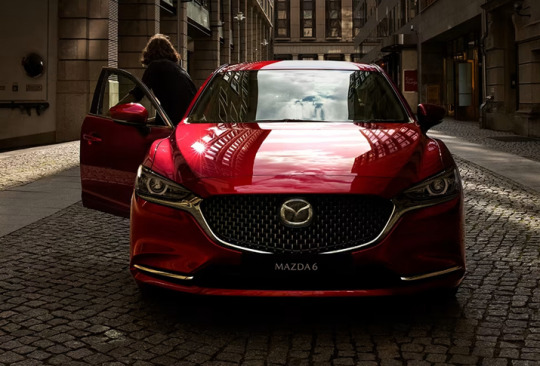
Mazda 6 is an Amazing Petrol Powered Large Size Car
2 notes
·
View notes
Text

Comprehensive Guide to Rebuilt Mazda 6 Engines and Cost-Effective Solutions
#Rebuilt Mazda 6 Engines#Replacement Mazda 6 Engines#Used Mazda 6 Engines for Sale#Mazda 6 Replacement Engines
0 notes
Text
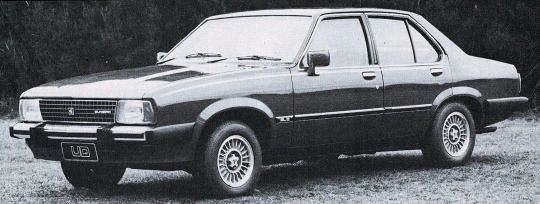





Holden Torana/Sunbird UD series, 1980. The LX/UC series had seen the Torana range split between 6 cylinder models that retained the Torana designation and 4 cylinder versions that adopted the Sunbird model name. There were plans for a UD series that would have included a 5-door hatchback not previously offered. However it was decided that the cars would be outdated (their platform dated back to the early 70s, engines from the 1960s) compared to the Chrysler (Mitsubishi) Sigma, Nissan Bluebird and Mazda 626 they would compete with. The UD project and 5-door Sunbird/Torana were cancelled and the Australian version of the GM J-car (the Holden Camira) was introduced in 1982 to replace them
#Holden#Holden Torana UD#Holden Sunbird UD#1980#General Motors#General Motors Holden#GMH#Australian market#5 door hatchback#dead brands
88 notes
·
View notes
Text
My Top 10 Iconic Le Mans Legends
This weekend, the 24 Hours of Le Mans race will celebrate its 100th anniversary, and with 62 cars from different classes gathering around in this centennial milestone as well as special guest stars, rest assured that the 100th running of the 24 Hours of Le Mans is going to be historical indeed.
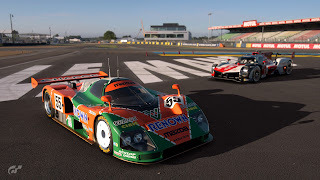
As the whole world is bracing for the centennial running of the legendary endurance race that pushes carmakers over the limit in the name of speed and survival, it's time for me to jot down my top ten iconic Le Mans legends.
10) GR010 - Following the success of their LMP1-class TS050, which propelled Toyota Gazoo Racing to three straight overall titles at Le Mans, Toyota created this competitor to the new Hypercar class, which replaced the LMP1 class after the 2020 season. Complying with Hypercar regulations, the GR010 is powered by a 3.5L V6 twin-turbo engine mated to an electric motor that powers the front wheels, making it a 4WD machine where the petrol engine powers the rear wheels while the electric motor takes care of the front, a drastic change compared to its LMP1 predecessor. Toyota defended its Le Mans success in the new Hypercar class with the #7 Toyota Gazoo Racing car emerging as the winner of the 24 Hours of Le Mans for two years, making it its fifth win in a row.
9) Toyota TS050 - In the 2018 24 Hours of Le Mans, being the only manufacturer-backed LMP1 racer competing in its class, the #8 Toyota Gazoo Racing TS050, piloted by Formula 1 driver Fernando Alonso, Formula E driver Sebastien Buemi, and Kazuki Nakajima, made a historic victory at Le Mans, marking the second time a Japanese carmaker won Le Mans since the legendary Mazda 787B and the first time a Japanese driver became part of the Le Mans-winning team. In 2019 and 2020, with the latter being the final year for the LMP1 era, Toyota emerged victorious in Le Mans.
8) Jaguar XJR-9 - Built in collaboration between Jaguar and Tom Walkinshaw Racing, Jaguar's Group C competitor is powered by two V12 engines; a 7.0L for the WSPC and a 6.0L for IMSA GTP class. Both produce 760PS of power and 828Nm of torque, while mated to a 5-speed March/TWR manual gearbox, making the XJR-9 capable of hitting a 245mph top speed. A Silk Cut-sponsored Jaguar XJR-9 won the 1988 24 Hours of Le Mans with Jan Lammers, Johnny Dumfries, and Andy Wallace behind the wheel.
7) Peugeot 905 - The V10-powered Peugeot 905 cemented the French carmaker to the list of Le Mans winners when it won the legendary endurance race twice in 1992 and 1993.
6) Audi R18 TDi - The Audi R18 TDi is known as the only diesel-powered racing machine that conquered Le Mans three times from 2012 to 2014. Not only that, it has dominated two WEC championship titles from 2012 to 2013. Such achievement proves that diesel is king until dieselgate came and most carmakers are ditching diesel-powered engines for good.
5) 919 Hybrid - In 2014, Porsche returned to LMP1 endurance racing with their 919 Hybrid and although it didn't fare well in its first run, which led to its 3rd place finish at the constructor's championship at the 2014 WEC season, it came back with a much fighting chance and because of such will power, it managed to win not just Le Mans but also three WEC seasons on the trot from 2015 to 2017. Porsche has left the LMP1 racing program after their three-win streak with the 919, only to make a comeback in the Hypercar class with the 963 racing machine.
4) Sauber-Mercedes C9 - As part of the Sauber-Mercedes partnership, this Group C prototype was introduced in 1987 and its first success can be traced back to the 1989 24 Hours of Le Mans, where the #63 C9 driven by Jochen Mass, Manual Reuter, and Stanley Dickens, achieved a win. During qualifying for Le Mans, the C9, with its Mercedes-Benz M119 HL 90º 5.0L Turbo V8 engine with two KKK turbos, achieved a top speed of 248.0 mph (400 km/h) at the Mulsanne Straight of Le Mans.
3) 917K - The Porsche 917K is known as the short-tail version of the legendary 917, a sports prototype race car, and it gave Porsche their first overall wins at Le Mans for two straight years since 1970. Thanks to such success, it even gained a starring role in the Le Mans movie starring Steve McQueen.
2) 787B - Built as an improved version of the 787, it features the same R26B 4-rotor Wankel engine as its predecessor which produces up to 690HP of power. Aside from that, it features carbon-fiber bodywork which resulted in a light, rigid body structure and other improvements. In the 1991 24 Hours of Le Mans endurance race, Mazda sent two 787B machines with the race-winning #55 car driven by Bertrand Gachot, Johnny Herbert, and Volker Weider. The 787B not only became the first Japanese-manufactured race car to win Le Mans, but it's also the first-and-only rotary-powered race car to win the said endurance race.
1) GT40 Mk. II - Ford's trial-and-error process of creating a racing machine that can crush Ferrari in Le Mans is nothing more of an act of revenge from the Blue Oval following Ferrari's rejection to become part of the Ford empire. Armed with the 7.0L V8 engine producing 485HP of power and mated to a 4-speed gearbox, the GT40 Mk.II from Ford delivered a stunning podium sweep at the 1966 24 Hours of Le Mans race, more than enough to crush Ferrari into it. Such achievement has been profiled in the biopic movie Ford vs. Ferrari.
In this centennial running of the 24 Hours of Le Mans, will it be a milestone for Toyota Gazoo as it's seeking a three-peat in the Hypercar class? Will the return of Ferrari in Le Mans crush Toyota's dreams for a three-peat? Find out as this legendary endurance race unfolds this Saturday, June 10th. Don't miss it!
2 notes
·
View notes
Text
How to Change the PCV Valve on a Mazda 6: 3.0L 04 to 08

How to change the PCV Valve on a Mazda 6 with a 3.0L from 2004 to 2008. You may be wanting to do a thorough maintenance on your Mazda 3.0L and found the PCV Valve isn’t in plain sight. Not to worry, this quick and short article will go over where to find it and how to replace it.

Most people don’t realize how crucial a PCV Valve is. When they stop functioning like the should be, problems can arise. Your car can start using oil and burn it out the tail-pipe, or start blowing gaskets. The PCV Valve balances the crankcase pressure while the pistons are in motion.
Without this valve, the crankcase can build up pressure and cause your gaskets to start leaking. On the other hand, with the valve in the stuck open position, will make your engine to suck oil into the intake and burn oil.
How the PCV Valve on a Mazda 6 3.0L Works

I have mentioned what can happen if it isn’t working properly. However, it can be helpful to know what it does. PCV stand for “Positive Crankcase Ventilation.”
The PCV valve system operates on a straightforward principle. It regulates the pressure in the crankcase. Connected to the intake, it modulates vacuum levels. When the engine is at idle, the vacuum is high. With the high vacuum, the check valve restricts vacuum from being pulled on the crankcase.
As the RPM increases and vacuum drops, the valve opens wider, permitting more pressure into the intake. This pressure and gases then re-enter the combustion cycle, burning off alongside fresh fuel and air. This prevents condensation in the oil, and keeps gaskets from leaking due to pressure.
So, basically, when the engine is at idle or low RPM, the crankcase isn’t under that much pressure. When you increase the RPM’s, the crankcase starts to build pressure. The regulated vacuum, releases that pressure and allow the engine to burn off the excess pressure.
Do not think that a PCV Valve is only for emissions, there are many articles that make that statement. California required this Valve in 1961. Car engines up till then, just vented the oil vapor straight to the atmosphere. By venting straight into the air, you had some pollutants, but you also had oil usage.
The PCV valve just allows the oil vapor to go back into the combustion chamber to be burned. This reduces the number of pollutants released by the engine. However, the PCV also reduces how much oil an engine loses. Learn more about how a PCV valve works reading my article: How Does a PCV Valve Work.
What to Look for With a Bad PCV Valve on a Mazda 6
Most of the time, when a PCV Valve goes bad, the driver doesn’t even notice while driving. What you may notice, is oil puddles under the car, or the car smoking out the exhaust.
It can affect the car’s performance in some instances, but normally not. Depending on the engine, sometimes, although rarely. A defective PCV Valve can cause the engine to misfire, or stumble upon acceleration.
What To Look For If Valve Is Stuck Closed
- Whistling or hissing sound coming from the engine
- Oil leaks, most commonly from the valve cover gasket
- A decrease in your fuel mileage
- Possible “Check Engine Light”. This would be set off if your emission levels are far enough off.
What To Look For If Valve Is Stuck Open
- Excessive oil residual build up around the PCV Valve hose or around the valve cover
- Rough idle or even misfiring, rare possibility in noticing a drop in performance
- Harder to start after the car has sat for a period of time
- Blue, gray or white smoke coming from exhaust pipe, meaning it is burning oil
Locating Your PCV Valve on Your Mazda 6 3.0L

You will find at the very back of the engine, a hose that curves downward. This hose is the PCV Valve hose and the valve is down and below the plenum. You will be removing the hose from the plenum and from the valve itself.
There is a bracket that mounts a module and a wire retainer, remove this with two bolts . This will give you room to move your hand around. Disconnect the small bolts to the module and bracket, and peel them back out of the way. No need to disconnect wires or hoses from this.

Remove the PVC Hose by releasing the clamp and pulling it back. Pull the hose from the plenum and then pull it off the PCV Valve. There is a smaller hose also going to the plenum for you to remove. Looking at the where the PCV Hose goes to the plenum, this next hose is to the right and a little below it. Again, pull and slide the clamp back and pull this hose back and push it out of the way.
You will now have a clear view of the PCV Valve. Using a long pair of needle nose pliers. Grab a hold of the square part of the valve and twist it counter clockwise, while pulling lightly upward.
Using the same pliers, take the new valve and put it back into the hole and twist it clockwise. This all could possibly be done by hand. So, you can try it first with you hand first.
Now reconnect the PCV Hose, then the smaller hose. Put the bracket back to the firewall and you have successfully change a PCV Valve on a Mazda 6 3.0L
Video How to Change the PCV Valve on a Mazda 6: 3.0L 04 to 08
Shop Amazon for parts related to replacing the PCV valve on a Mazda 6.
Read the full article
0 notes
Text
6 Most Common Problems with Mazda CX-5 Explained

Introduction:
Mazda CX-5, the epitome of style and performance in the world of SUVs, has garnered a loyal fan base for its sleek design, robust engineering, and delightful driving experience. However, like any other vehicle, it's not immune to its share of issues. In this blog post, we'll delve into the six most common problems that CX-5 owners might encounter, offering insights and solutions to keep your Mazda running smoothly on the road.
1. Mazda CX-5 Transmission Issues:

Among the most reported problems with Mazda CX-5 is transmission-related issues. Some owners have experienced jerky shifts, hesitation during acceleration, or even complete transmission failure. This could be attributed to faulty transmission control modules or clutch problems. Regular maintenance checks and timely fluid changes can help mitigate these issues. If you notice any unusual behaviour in your CX-5's transmission, it's crucial to get it inspected by a qualified mechanic promptly.
2. Mazda CX-5 Infotainment System Glitches:

As technology becomes increasingly integrated into modern vehicles, the infotainment system plays a central role in the driving experience. However, Mazda CX-5 owners have occasionally faced glitches in their infotainment systems, such as freezing screens, unresponsive controls, or Bluetooth connectivity issues. Updating the system software regularly and resetting the infotainment system can often resolve these issues. In some cases, a software update from Mazda may be required to address persistent problems.
3. Mazda CX-5 Noise from Suspension Components:

While Mazda CX-5 is renowned for its smooth and comfortable ride, some owners have reported noises emanating from suspension components, particularly over bumps or rough terrain. These noises can be attributed to worn-out bushings, struts, or sway bar links. A thorough inspection by a qualified technician can help identify the source of the noise, and replacing the faulty components can restore the tranquillity of your CX-5's ride.
4. Mazda CX-5 Fuel Pump Failures Issues:

Fuel pump failures have been cited by some Mazda CX-5 owners as a recurring issue. Symptoms may include difficulty starting the engine, stalling, or loss of power while driving. A failing fuel pump can disrupt the fuel delivery system, leading to engine performance issues. Regular inspection of the fuel system and prompt replacement of a worn-out fuel pump can prevent potential breakdowns and ensure the smooth operation of your CX-5.
5. Mazda CX-5 Paint Quality Issues:

While Mazda is renowned for its attention to design and aesthetics, some CX-5 owners have expressed dissatisfaction with the paint quality, reporting instances of premature chipping, peeling, or fading. Environmental factors, such as exposure to sunlight and road debris, can exacerbate paint damage over time. Applying a protective wax coating regularly and promptly addressing any paint imperfections can help preserve the appearance of your CX-5 and prevent further deterioration.
6. Mazda CX-5 Electrical Issues:

Electrical gremlins can plague any modern vehicle, and Mazda CX-5 is no exception. Owners have reported various electrical issues, ranging from malfunctioning power windows and door locks to erratic dashboard warning lights. These problems could stem from wiring harness issues, faulty sensors, or a drained battery. Regular battery checks, ensuring proper grounding of electrical components, and addressing any wiring issues can help minimize the risk of electrical failures in your CX-5.
How Service My Car Assists You?
Looking to ensure peak performance for your Mazda CX-5? Discover top-notch car repair dubai solutions tailored to your vehicle's needs. Entrust your beloved ride to our expert technicians who specialize in providing meticulous care and maintenance. From routine check-ups to intricate repairs, we've got you covered. Ready to experience Service My Car excellence? Let us elevate your driving experience with our unparalleled dedication to keeping your Mazda CX-5 running smoothly mile after mile.
Conclusion:
While the Mazda CX-5 boasts a plethora of admirable qualities, including stylish design, agile handling, and advanced technology, it's not impervious to common automotive issues. By staying informed about potential problems and proactively addressing them through regular maintenance and timely repairs, you can ensure that your CX-5 remains a reliable and enjoyable companion on the road. Remember, a little care goes a long way in preserving the performance and longevity of your beloved Mazda CX-5.
0 notes
Text
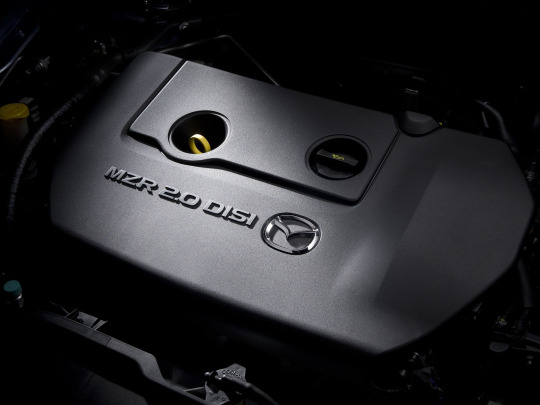
Rebuilt Mazda 6 Engine: Revamp Performance & Affordability
Exploring Options: Used vs. Rebuilt vs. Reconditioned Mazda 6 Replacement Engine
https://compareenginemarket.blogspot.com/2024/02/rebuilt-mazda-6-engine-revamp.html
#Mazda#Mazda 6#Mazda Engines#Mazda 6 Engines#Rebuilt Mazda Engines#Used Mazda Engines#Recondition Mazda Engines#Rebuild Mazda Engines
0 notes
Text
XTOOL D9S Pro Full System Diagnostic Tool vs Xtool D9 Pro
What’s the difference between Xtool D9S Pro and D9 Pro?
D9S Pro is the upgraded version of D9 Pro. Xtool improved the hardware for D9S Pro, and the function supported is still the same.
Differences:
1.Has larger memory and battery capacity.
2.Revampe the connection mode. D9S Pro has built-in WiFi Module – No home WiFi connection required! Simply insert the VCI box into the OBD interface for seamless data transmission, 10X faster than traditional wireless BT Scanner, and extended communication range up to 66 ft.
* While downloading software, an internet connection is still necessary!
3.The DoIP port is now been integrated into the VCI box to make sure the connection and data transfer are more stable. So there is no need for a DoIP port on the diagnostic tablet.

Check the comparison table below.

What’s the function of D9S Pro?
It supports Immo & Key Programming, OE-Level Full System Diagnostics, ECU Programming (Coding), DOIP and CAN FD Functions, Topology Map, 42+ reset function, etc.

1.IMMO & Key Programming with additional accessories
Works with KC100: for general purpose key programming,
Works with KC501: for advanced level all purpose key programming,
Works with EEPROM Adapter: for PIN reading and & EEPROM reading & writing while key programming.
Works with XV100 Inspection Camera: for hard-to-reach spots visual inspection of stains, rusts, wear and tear, like engine cylinders.
Works with KS01(for Toyota all key lost programmer )
Works with KS02 (for Mitsubishi all key lost programmer)
Works with M821 (for Benz all keys lost)
Works with M822 (for Toyota 8A non-smart key all keys lost)
Works with AnyToyo SK1 (for Toyota 8A/4A Smart Key Programming bypass pin)
2.OE-Level Full System Diagnostics
Read/clean DTCs, view live data, freeze frame, ECU info and perform bi-directional control…
3.Bi-Directional Control
4.ECU Programming (Coding)
Support the Online ECU Programmer for Benz/BMW and VW (no need with online account) and Offline ECU Programmer for Ford /Mazda.
Can Programming new ECUs (PCM, ECM)
Module Replacement
Refresh Hidden Features
5.Newest DOIP and CAN FD Functions
Access new communication protocols of CANFD (cover MY2020+ GM models), and DOIP (compatible For BMW E/F/G Chassis, Jaguar, Land Rover vehicle makes)
6.Topology Map
Topology Map compatibility with GM, CHRYSLER, JEEP, DODGE, FORD, TOYOTA, NISSAN, HONDA, BMW, BENZ, HYUNDAI, MAZDA (MORE COMING SOON)
DO NOT available for All Vehicle Makes. Please come to us for compatibility check.
The APP V4.25.4_6.36 onwards supports intelligent topology mapping.
How to get the Newest APP for D9S pro?
Step 1: Reboot the D9S Pro scanner and connect the D9S Pro to the internet
Step 2: Download and install NEW APP
Step 3: Go “Update” screen and download the newest available software packages.
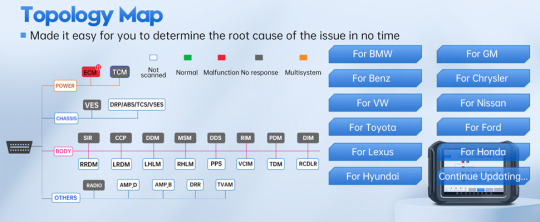
7.42+ Reset Functions
ECU Configuration, ABS Bleeding, Fuel Trim Reset, IMMO/ Key Programming, Oil Reset, EPB, BMS Match, DPF Regeneration, Injector Coding, SAS Adjustments, Throttle Relearn, Airbag Repair, TPMS Reset, Air Suspension, Gear Learning(Crankshaft Relearn), Gearbox(Transmission) Match, Headlight Adjustment, Window Initialization, Seat Configurations, Power Balance, Electronic Pump Activation, Disable Transportation, Tire Refit, A/F Reset, Start/Stop Reset, Language Change, Transmission Service Fast Relearn, Fuel Injector Balance, Crankshaft Sensors Relearn, Idle Learn, Zero- Point Calibration, Fuel Alcohol Composition Reset, Actuator Calibration Test, WCS Reset, VIN Registration(Write), Injector Balance Rate Programming, etc are all available.
How to connect Xtool D9S Pro diagnostic tool and vehicle?
D9S Pro supports Bluetooth, WiFi, and USB three connection methods, which makes it easier for you to use.

Which car models are supported by D9SPro?
It supports the most car models (1000+) on the market.
For American cars
For BUICK, For CADILLAC, For CHEVROLET, For CHRYSLER, For DODGE, For FIAT (BRAZIL), For FORD, For FORD (AUSTRALIA), For GM
For JEEP, For LINCOLN, For GM (BRAZIL)
For European car
For ABARTH, For ALFA ROMEO, For AUDI, For BENTLEY, For BMW, For BUGATTI, For CITROEN, For DACIA, For DR, For EUROFORD, For FERRARI, For FIAT, For GAZ, For OPEL (SOUTH AFRICA), For IVECO, For JAGUAR, For LAMBORGHINI, For LANCIA, For LAND ROVER, For MASERATI, For MAYBACH, For MERCEDES, For MINI, For OPEL, For PEUGEOT, For PORSCHE, For RENAULT, For ROLLS-ROYCE, For ROVER, For SAAB, For SEAT, For SKODA, For SMART, For SPRINTER, For VAUXHALL, For VAZ, For VOLVO, For VW, For BORGWARD, For ASTON MARTINA,
For Asian car
For ACURA, For DAEWOO, For DAIHATSU, For HM, For HOLDEN(AUSTRALIA), For HONDA, For HYUNDAI, For IKCO, For INFINITI, For ISUZU, For KIA, For LEXUS, For LUXGEN, For MAHINDRA, For MAHINDRA(INDIAN), For MARUTI, For MAZDA, For MITSUBISHI, For MVM, For NISSAN, For GTR(NISSAN, For PERODUA, For PERODUA(MALAYSIA,
For PROTON, For PROTON (MALAYSIA, For SAMSUNG, For SAIPA,
For SSANGYONG, For SUBARU, For SUZUKI, For TLISUZU, For TOYOTA, For UNITED PAKISTAN, For VINFAST
For Chinese car
For BRILLIANC, For BYD, For CHANGAN, CHANGAN-FORD, For CHANG HE, For CHBUICK, For CHCADILLAC, For CHCHEVRO-KET, For CHERY, For CHSUZUKI, For DFCIROEN, For HONDA(DF), For DFNISSAN, For DFEUGEOT, For ECUAID, For FAW(TIANJIN, For FOTON, For GOLDEN(XIAMEN, For GONOW, For MITSUBISHI(GAC, For GREAT WALL, For HONDA(GAC, For HAFEI, For HAIMA, For HCBMW, For JAC, For JIANGHUAI, For JMC, For JOYLONG, For LIFAN,
For LYNKCO, For MG (SAIC, For NJFIAT, For QOROS, For MAXUS,
For SGM, For TOYOTA (CHINA, For VENUCIA, For WULING, For XINKAI,
For YQMAZDA, For ZHONGGSHUN, For ZHONGXING, For ZOTYE, For SOUEAST, For ROEWE (SAIC), For JIQING (FAW), For HUANGHAI, For LANDWIND, For EXEEDTY, For NISSAN (ZHENGZHOU), For DFPV,
For JETOR, For DFFX, For CHERY EV
To learn more info about XTOOL D9S Pro Full System Diagnostic Tool, check
0 notes
Text
Could the Mazda 6 be replaced by a Chinese electric car?
It’s no secret the current Mazda 6 mid-size sedan and wagon range is nearing the end of its life, but we may finally have a clue about its successor – and it’s probably not what you were expecting.
While rumours of a rear-drive Mazda 6 based on the company’s Large Architecture – the basis of the CX-60 and CX-90 SUVs – with inline six engines have been swirling for years, Mazda has ruled out a new…
View On WordPress
0 notes
Text
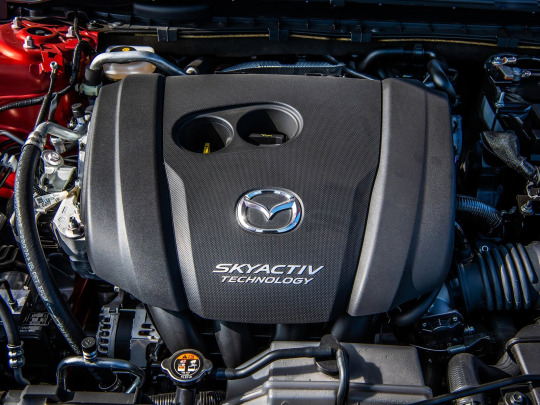
Benefits of Rebuilt Mazda 6 Engines: Why A Rebuilt Engine is A Smart Choice for your Mazda 6
A Comprehensive Guide to the Different Types of Mazda 6 Replacement Engines Available
https://www.enginecompare.co.uk/blog/benefits-of-rebuilt-mazda-6-engines-why-a-rebuilt-engine-is-a-smart-choice-for-your-mazda-6/
0 notes
Photo

The Mazda 6 Gets More Power from its Diesel Engines
1 note
·
View note
Text
MAHLE Motorsport Introduces 2023 Application Guide

Fletcher, NC, (November 14, 2022) – MAHLE Motorsport, the technology leader in high-performance PowerPak piston sets for street or race applications, announces the availability of the company’s new 2023 Application Guide. The 38-page application guide features all of the company’s high-performance PowerPak piston sets and Pro Series Race pistons and provides complete product information for seven new PowerPak sets in addition to multiple new rings, pins, and rails.
A sample of the new PowerPak piston sets available for 2023 include the Ford Godzilla 7.3L PowerPak, SBC 22°/23° Flat Top Gasported PowerPak, Forged SBC 23° USRA approved PowerPak with press-fit pins, SBC 22° ASCS 360 Sprint Dome gas ported with asymmetrical valve pockets, LS 5.3L (Gen 4) Flat Top drop-in forged replacement assembly compatible with LS1/2/6 style cathedral port heads, Big Block Mopar 440 Dish and a BB Mopar 383/400 Flat Top and Ford 5.0L Modular Coyote (Gen 3) Direct Injected (2018+). Also, new cast piston PowerPak sets are now available for the Ford Powerstroke including a 6.0L piston set that is also offered with 0.100” deep valve pockets, and a Ford 6.4L Powerstroke available with 0.10” deep valve pockets.
MAHLE Motorsport PowerPak piston sets provide engine builders with their best value based on a reputation of reliability, durability, and added features. Most PowerPak sets come complete with a high-performance ring set with pins, and clips. Also, the pistons are dual coated with a Phosphate dry lubricant to reduce friction and GRAFAL® skirt coating to reduce drag and skirt fatigue.
The PowerPak sets featured in the guide include a broad selection of SBC, LS, BBC, SBF, Ford Modular PowerPaks, and a growing list of Hemi, Powerstroke, and Diesel PowerPak sets. MAHLE Motorsport also offers PowerPak sets for many imports and sport compacts including Mazda, Subaru, Nissan, Ford EcoBoost, BMW, Audi, VW, and Toyota applications. The guide also includes a section on ring gap instructions with illustrations and samples based on the high-performance street, Circle Track/Drag Racing, Turbo/Supercharger, Diesel Turbocharged, and more.
The new application guide is available to download now at mahlemotorsports.com For more information about MAHLE Motorsport’s new products, call MAHLE Motorsport toll-free at 888-255-1942, Monday-Friday (8:00 a.m. – 5:00 p.m.) EST. To keep up with the latest about MAHLE Motorsport products and race wins, visit Facebook or Instagram, or follow #mahlemotorsports.
Read the full article
0 notes
Text
My Top 10 ICE-powered JDM Executive Midsize FF Sedans
The third-generation Mazda 6 will go down in history as the last JDM D-Segment front-wheel-drive saloon to be powered by internal combustion and with production ending this April, this race is now sadly extinct due to the never-ending rise of crossovers and SUVs.

As this species is set to be extinct in the springtime, it's time for me to jot down my top 10 JDM executive midsize front-wheel-drive sedans powered by internal combustion.
10) Sixth-generation Toyota Camry - At the end of 1996, the Camry Gracia was launched in sedan and estate variants. The Gracia is the luxury alternative to the Camry and it served as the replacement for both the Camry Prominent and the US-built Scepter. With the fifth-generation Camry's production ending in the summer of 1998, the Camry Gracia took its place and it was known as the sixth-generation Camry when it was facelifted in 1999. This is the last Camry to have a V6 engine offered in the Japanese market. A year later, Daihatsu sold the Toyota Camry as the Altis.
9) Suzuki Kizashi - Originally meant to be a US-exclusive model, the Suzuki Kizashi went on sale in Japan in the fall of 2009. With styling inspired by the three concepts, the Kizashi is powered by a 2.4L petrol engine producing 188PS while mated to a CVT with Manual Mode. The Kizashi is the last Suzuki sedan offered in Japan and production ended in 2015.
8) Seventh-generation Honda Accord - Launched in 2002, the seventh-generation Honda Accord features a sleeker design compared to its predecessor as well as improved dynamics. It was the first to feature Honda's Internavi Premium Club service, providing drivers the fastest route to their target destination. Powering the seventh-generation Accord is a choice of a 2.0L and 2.4L mated to a 5-speed AT. The Euro-R variant is powered by a 220PS 2.0L engine mated only with a 6-speed MT. This generation marked the last time to feature the Euro-R grade. The seventh-generation Accord was exported in Europe, in the US as the Acura TSX, and in Oceania as the Honda Accord Euro.
7) Nissan Cefiro A32 - Launched in 1994, the Nissan Cefiro A32 eschews its predecessor's FR layout in favor of a stable FF layout with comfortable driving in mind. Powering the Cefiro A32 is a choice of three VQ V6 petrol engines from 2.0L, 2.5L, to 3.5L. All are mated to either a 5-speed MT or a 4-speed AT.
6) Eighth-generation Mitsubishi Galant - Launched in late summer 1996, the eighth and final generation Mitsubishi Galant is no doubt one of the best-looking executive midsize saloons at that time with the sporty 4WD VR-4 variant the most aggressive-looking. It even spawned an Aspire twin two years later. The eighth-generation Galant is the first production car to be powered by a Gasoline Direct Injection engine for improved performance and fuel economy. It won the 1996 Japan Car of the Year award.
5) Sixth-generation Honda Accord - Launched in September 1997, the sixth-generation Honda Accord incorporates the Honda DNA through this D-segment executive midsize saloon, hence the car's slogan. Joining alongside the sixth-generation Accord is its Torneo twin and both of them are powered by a choice of 1.8L and 2.0L VTEC engines. In 2000, both the sixth-generation Accord and the Torneo received a minor change and gained the sporty Euro R variant powered by a 2.2L VTEC engine mated exclusively with a 5-speed MT.
4) Honda Inspire CP3 - Debuted at the 2007 Tokyo Motor Show, the CP3 Honda Inspire is powered by a J35A 3.5L i-VTEC PGM+FI V6 engine that produces a power output of 280PS and 342NM of torque. This engine comes with Variable Cylinder Management that shuts half of its cylinders. Coupled with the 5-speed AT, it has a fuel economy of 9.9km/L based on Japan’s 10-15 Mode standards. 9.6km/L based on JC08 Mode standards. Production ended in 2012, making it the last pure V6-powered Honda saloon ever made.
3) MAZDA6 (GJ) - Launched in 2012, the third-generation Mazda6, formerly known as the Atenza, is the first Mazda saloon to be powered by the SKYACTIV-D clean diesel engine mated to a six-speed SKYACTIV-MT, a first for a JDM Mazda in the SKYACTIV era. In addition, the Mazda6 is powered by a 2.0L SKYACTIV-G engine and the SKYACTIV-G 2.5T engine with Dynamic Pressure Turbo System. The Mazda6 was facelifted twice with the recent one in 2019 when Mazda decided to drop the Atenza naming in favor of the Mazda6 naming.
2) Nissan Teana J32 - Launched in 2008, the second-generation Nissan Teana is powered by a choice of a 2.5L and a 3.5L V6 engine mated to an XTRONIC CVT. Carrying over from the first-generation model, the Teana J32 comes with a signature front ottoman seat on the passenger side.
1) Nissan Teana J31 - Launched in 2003 as the replacement for the Cefiro, the Teana is Nissan's luxury premium midsize sedan that slots between the Skyline and the Cedric/Gloria sedans. While the styling is rather contemporary for a luxury sedan, the Teana's turning point is its luxurious interior which is about as cozy as the sofas and chairs you bought from the IKEA store. The Teana J31 is sold in South Korea as the Renault Samsung SM5 and SM7, and in other countries as the Renault Safrane.
It's a sad day in the world of motoring as there will be no more internal combustion-powered front-wheel-drive JDM executive midsize saloons on sale in the Land of the Rising Sun. If you want an executive midsize FF JDM saloon, you'll be going to make do with the hybrid ones. Actually, there are only two; the Lexus ES and the upcoming Honda Accord e:HEV.
Domo arigato, ICE JDM FF executive midsize sedans. They have served their purposes and now they're officially extinct because of SUVs. Although they're gone, they'll be never forgotten.
0 notes
Text
includes three large cupholders and a massive
This the Series II update of the fourth generation Honda CRV for sale, Perth drivers are likely to notice many of the changes have been made to more aggressively compete with the Toyota RAV4 and Mazda CX-5 within the medium SUV segment. It is paired with a nine speed automatic transmission, sourced from ZF. On the DTi-L, standard equipment includes power mirrors and windows, cruise control, climate control dual zone air conditioning, electrically adjusted eight way driver&39;s seat, electric tailgate, keyless entry, automatic wipers and headlights, and illuminated vanity mirrors.
The Cherokee Turbochargers Wholesale backseat even reclines, if you are carrying particularly tall passengers who are finding the generous headroom not quite enough. The cabin also features the 7. We would be happy to arrange your test drive or provide a finance quote. For this extra cash, you will find you have a four wheel drive 1. Front and rear passengers will find that the seats feel comfortable and there is plenty of legroom.0 litre engine in modern cars. However, with the introduction of the HRV last year, a little of the shine was taken off the CRV.6 litre twin turbo diesel litre turbo diesel seen in previous models.
With 556 litres of cargo space, extendable to 1648 litres when the back seats are folded, it obviously offers lots of capacity.. This includes three large cupholders and a massive console bin. Fortunately, with the new Honda CRV 2016 range, the model has recovered its mojo. This powertrain replaces the 2. The cabin also feels very spacious. The Honda official figures claim a fuel economy of 5. A fantastic example of this is the DTi-L.When it comes to the Honda CRV, Australia based drivers have been showing interest for over twenty years. If you would like to know more about the new Honda CRV 2016 range, contact us. Inside the Cabin: The new Honda CRV 2016 range, not only looks great on the outside but offers an excellent cabin space. The Prestige Honda team are available to answer any queries and we have an extensive range of vehicles at our showroom including the current Honda CRV for sale.
This delivers an impressive 118 kW power and offers frugal fuel economy of only 5.9 litres per 100 kilometres. This combination produces the equivalent output of a 2. While the CRV range is available from only $27,490 plus on the road costs, this model is a limited edition priced at $44k. On the Open Road: The DTi-L features two turbochargers; a smaller one for low revs and a larger one for higher revs. The engine feels fantastically distant when it&39;s throttled. However, there are also numerous intelligent storage options throughout the cabin to make it feel even more family friendly. The peak torque rate of 350 Nm kicks in at 2,000 rpm delivering plenty of punch.9 litres per 100 kilometres but in urban conditions, you could expect a drop in fuel efficiency
0 notes
Text
How To Change Spark Plugs On a Mazda 3.0L V6

In the old days, changing spark plugs on your car, wasn't that big a deal, well not any more. You would think on how to change spark plugs on a Mazda 3.0L V6, wouldn't need a "How To" guide. But here you are, looking into how to accomplish this no so easy task. This article covers the Mazda 3.0L V6 from 2004 to 2008.

The first thing you need to understand. This is one of those jobs where you are doing more than just changing the spark plugs. This job requires some disassembly of the engine. Which means, while you are there, there is other things you should replace while you are at it. Let’s dive into this really fun job and look at what all needs to be done.
What Else to Changing Spark Plugs on a Mazda 3.0L
Here is a quick layout what you will be getting into on changing spark plugs on a Mazda 3.0L. This layout will help you decide now if you even want to attempt it.
Some models of Mazda’s with the 3.0L may be more or less difficult. This article is based on the Mazda 6 and the MPV. Overall, they will all be about the same.
In order to get to the spark plugs on a Mazda 3.0L, you have to remove the upper plenum.
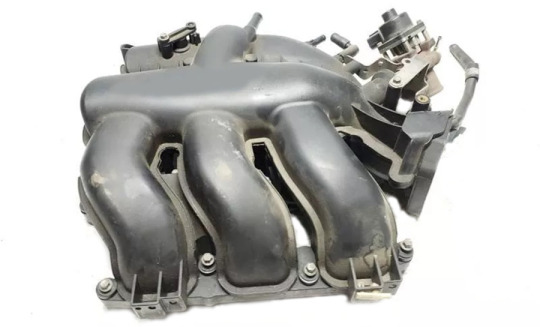
The plenum has to be removed for the rear three spark plugs only. However, this is going to be your hardest task out of the whole project.
In order to remove any of the spark plugs. You first have to remove the coil packs that are mounted on top of the plugs.

There is one more part that should be changed while you have everything apart. The PCV Valve, it is buried below the plenum. If there was ever a time to change the PCV Valve, this is it.
So, you can see, this isn’t an impossible task, but more than just a simple changing of the spark plugs on a Mazda 3.0L V6. All in all, you can do this job, completely unexperienced, in and around 3 hours.
How Often Do Spark Plugs on a Mazda 3.0L Need to be Changed
Many spark plugs today can go 100000 miles before needing to be replaced. However, on the Mazda 3.0L between 04 and 08. The answer would be to replace them every 75000 or every 60 months.
Coil packs can technically go 100000 miles, but there is a catch. When a spark plug starts declining in performance, it causes the ignition system to decline.
Just like in the old days when cars had distributors. When a spark plug starts building up resistance not being able to fire as good as it once did. The ignition backs up into the distributor cap, causing the cap and rotor to burn out sooner.
This applies to coil packs as well. When the spark plug starts to not fire as efficiently, it causes the coil packs to overheat and burn out.
So, as mentioned above, since you have so much to do to change the spark plugs anyhow. Keeping the plugs and the coil packs changed at the same time is the most logical way to go.
Now that you know that how declining spark plugs on a Mazda 3.0L can wear down the coil packs. I hope you understand why it is important to change both at the same time.
Always Replace in Pairs and Sets
There are some shops that shouldn’t even be in business, that will change just the failing plug or coil pack. Do not follow their practice of this stupid mindset.
Always change tune-up parts in pairs or sets. Meaning, no matter how many cylinders your engine has. Replace all spark plugs as a set. This includes coil packs or spark plug wires as well.
Understand, if one plug is starting to fail, that just means the others are right behind it. Imagine the expense on an engine like this Mazda 3.0L. Where you have to spend 3 hours to remove the plenum each time to replace the rear spark plugs.
It makes no sense to replace any parts like for tune-ups or brakes or even headlamp bulbs, one at a time.
You can learn more about this by reading my article on “Buying in Pairs to do the Job Right.”
In the old days, changing spark plugs on your car, wasn't that big a deal, well not any more. You would think on how to change spark plugs on a Mazda 3.0L V6, wouldn't need a "How To" guide. But here you are, looking into how to accomplish this no so easy task. This article covers the Mazda 3.0L V6 from 2004 to 2008.

The first thing you need to understand. This is one of those jobs where you are doing more than just changing the spark plugs. This job requires some disassembly of the engine. Which means, while you are there, there is other things you should replace while you are at it. Let’s dive into this really fun job and look at what all needs to be done.
What Else to Changing Spark Plugs on a Mazda 3.0L
Here is a quick layout what you will be getting into on changing spark plugs on a Mazda 3.0L. This layout will help you decide now if you even want to attempt it.Some models of Mazda’s with the 3.0L may be more or less difficult. This article is based on the Mazda 6 and the MPV. Overall, they will all be about the same.In order to get to the spark plugs on a Mazda 3.0L, you have to remove the upper plenum.

The plenum has to be removed for the rear three spark plugs only. However, this is going to be your hardest task out of the whole project.In order to remove any of the spark plugs. You first have to remove the coil packs that are mounted on top of the plugs.

There is one more part that should be changed while you have everything apart. The PCV Valve, it is buried below the plenum. If there was ever a time to change the PCV Valve, this is it.So, you can see, this isn’t an impossible task, but more than just a simple changing of the spark plugs on a Mazda 3.0L V6. All in all, you can do this job, completely unexperienced, in and around 3 hours.
How Often Do Spark Plugs on a Mazda 3.0L Need to be Changed
Many spark plugs today can go 100000 miles before needing to be replaced. However, on the Mazda 3.0L between 04 and 08. The answer would be to replace them every 75000 or every 60 months.Coil packs can technically go 100000 miles, but there is a catch. When a spark plug starts declining in performance, it causes the ignition system to decline.Just like in the old days when cars had distributors. When a spark plug starts building up resistance not being able to fire as good as it once did. The ignition backs up into the distributor cap, causing the cap and rotor to burn out sooner.This applies to coil packs as well. When the spark plug starts to not fire as efficiently, it causes the coil packs to overheat and burn out.So, as mentioned above, since you have so much to do to change the spark plugs anyhow. Keeping the plugs and the coil packs changed at the same time is the most logical way to go.Now that you know that how declining spark plugs on a Mazda 3.0L can wear down the coil packs. I hope you understand why it is important to change both at the same time.
Always Replace in Pairs and Sets
There are some shops that shouldn’t even be in business, that will change just the failing plug or coil pack. Do not follow their practice of this stupid mindset.Always change tune-up parts in pairs or sets. Meaning, no matter how many cylinders your engine has. Replace all spark plugs as a set. This includes coil packs or spark plug wires as well.Understand, if one plug is starting to fail, that just means the others are right behind it. Imagine the expense on an engine like this Mazda 3.0L. Where you have to spend 3 hours to remove the plenum each time to replace the rear spark plugs.It makes no sense to replace any parts like for tune-ups or brakes or even headlamp bulbs, one at a time.You can learn more about this by reading my article on “Buying in Pairs to do the Job Right.”
Read the full article
0 notes